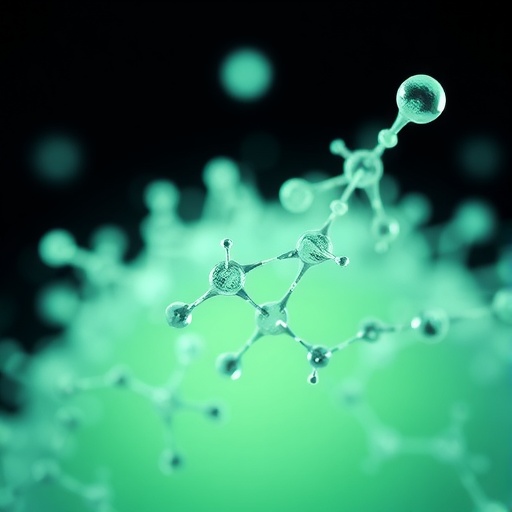In an age where the demand for bioproducts is soaring, the focus on sustainable production methods has never been more pressing. A recent breakthrough has emerged in the realm of biotechnology, particularly concerning hyaluronic acid—a compound known for its remarkable moisture-retaining properties, making it a coveted ingredient in both biomedical and cosmetic industries. Researchers, led by Ali et al., have embarked on a journey to optimize the production of hyaluronic acid from the strain Bacillus paralicheniformis PV154040.1. Their findings, published in the journal International Microbiology, herald a new era in bioprocessing that could radically enhance the scalability and sustainability of hyaluronic acid production.
The study fundamentally redefines how microbial fermentation can be utilized to yield hyaluronic acid efficiently. Utilizing Bacillus paralicheniformis PV154040.1, which is recognized for its Generally Recognized As Safe (GRAS) status, the research team sought to develop an environmentally friendly and economically viable bioprocess. One significant advantage of using Bacillus is that it offers a dual benefit; being a GRAS organism, it aligns well with regulatory compliance while maintaining a high yield of hyaluronic acid. This organism was subjected to a series of optimized conditions to unveil its full potential.
The optimization process involved meticulously adjusting various parameters that directly influence bacterial growth and metabolite production. Temperature, pH, nutrient composition, and aeration were all fine-tuned to create an ideal environment for Bacillus paralicheniformis PV154040.1 to flourish. This multi-faceted optimization is crucial, as even slight variances can lead to diminished yields or altered product qualities that could significantly impact the applicability of the final product in different industries.
Crucially, the authors illustrated that not only could high yields be achieved, but they did so without compromising the quality of hyaluronic acid. This aspect is particularly vital for applications in the cosmetics sector, where product purity and efficacy are paramount. Hyaluronic acid produced under the newly established optimized conditions demonstrated enhanced molecular weight and a consistent profile, making it suitable for various formulations, from skin serums to dermal fillers.
The economic implications of this bioprocess are equally noteworthy. By favoring microbial fermentation over chemical synthesis methods, which often involve hazardous reagents and energy-intensive processes, the researchers unequivocally highlight an advantageous shift towards sustainable practices. As industries are increasingly scrutinized for their environmental footprints, this bioprocess offers a refreshing and responsible alternative, positioning it favorably in a market that is gradually moving towards greener methodologies.
In addition to its biocompatibility and sustainability, the study provides insights into scaling production. This aspect is pivotal for commercialization, as the efficiency of scaling from laboratory conditions to industrial settings can pose challenges. By presenting a robust framework that addresses scale-up processes, the researchers ensure that this bioprocess could be adopted by various manufacturers keen on producing hyaluronic acid in a cost-effective manner without sacrificing quality or safety.
Aside from its biomedical applications—such as joint injections and eye surgeries—hyaluronic acid has carved an essential niche in the cosmetics world. The demand for products featuring this ingredient is skyrocketing, driven by the growing consumer desire for skincare that hydrates and plumps the skin. The positive implications of high-yield microbial production methods cannot be overstated, as they will likely lead to an influx of new, innovative products entering the marketplace, backed by scientific research.
Moreover, the implications of such research extend far beyond hyaluronic acid. The methodologies and strategies developed in this study could serve as a blueprint for producing other bioproducts. As industries expand their offerings towards bio-based products, the foundational principles unveiled here may catalyze the transformation of numerous sectors that rely on microbial fermentation.
As the research unfolds further, one can anticipate collaborative efforts between academia and industry partners to translate these findings into practical applications. The potential for innovation is enormous, particularly given the current landscape that favors natural and sustainable ingredients in cosmetic formulations. Collaborations could enhance the research and lead to the fine-tuning of production methods, ensuring that they meet the rigorous demands of safety and efficacy in consumer products.
Intriguingly, the accessibility of these research findings suggests a broader movement toward democratizing bioprocessing technologies. By publishing these results openly, the authors pave the way for smaller companies and startups to leverage this knowledge, challenging larger corporations that traditionally dominate the bioproducts market. Such a shift in accessibility could significantly enhance competition and potentially lead to novel formulations that resonate with environmentally conscious consumers.
In conclusion, the pioneering work conducted by Ali et al. not only offers a compelling story about the biotechnological manipulation of a vital substance but also serves as a clarion call for sustainable practices across industries. As more researchers delve into optimizing microbial systems, the world may witness a transformative leap toward greener approaches in bioprocessing. The future of biodegradable materials, pharmaceuticals, and skincare products may very well lie in optimally managed bacterial cultures—transforming how industries approach production in an environmentally responsible and economically viable manner.
The pursuit of refined hyaluronic acid production through such innovative research aligns seamlessly with global sustainability goals. As the implications ripple across various sectors, it is evident that the marriage of science and industry can birth new opportunities—demonstrating that through collaboration and optimization, we can pave the way for a brighter, healthier future.
Subject of Research: Scalable production of hyaluronic acid from Bacillus paralicheniformis PV154040.1
Article Title: Scalable production of hyaluronic acid from Bacillus paralicheniformis PV154040.1 under optimized conditions: a GRAS-based bioprocess for biomedical and cosmetic applications.
Article References: Ali, S., Zahra, H., Ahmad, M.U. et al. Scalable production of hyaluronic acid from Bacillus paralicheniformis PV154040.1 under optimized conditions: a GRAS-based bioprocess for biomedical and cosmetic applications. Int Microbiol (2025). https://doi.org/10.1007/s10123-025-00742-8
Image Credits: AI Generated
DOI: 10.1007/s10123-025-00742-8
Keywords: Hyaluronic acid, Bacillus paralicheniformis, bioprocess, GRAS, sustainability, scalable production, microbial fermentation, biotechnology, cosmetics, biomedical applications.
Tags: advancements in biotechnology researchBacillus paralicheniformis PV154040.1Bacillus production of hyaluronic acidcosmetic industry bioproductsenhancing hyaluronic acid yieldenvironmentally friendly production techniquesGRAS organisms in biotechnologyhyaluronic acid in biomedical applicationsmicrobial fermentation optimizationregulatory compliance in bioprocessingscalable production of bioproductssustainable bioprocessing methods





